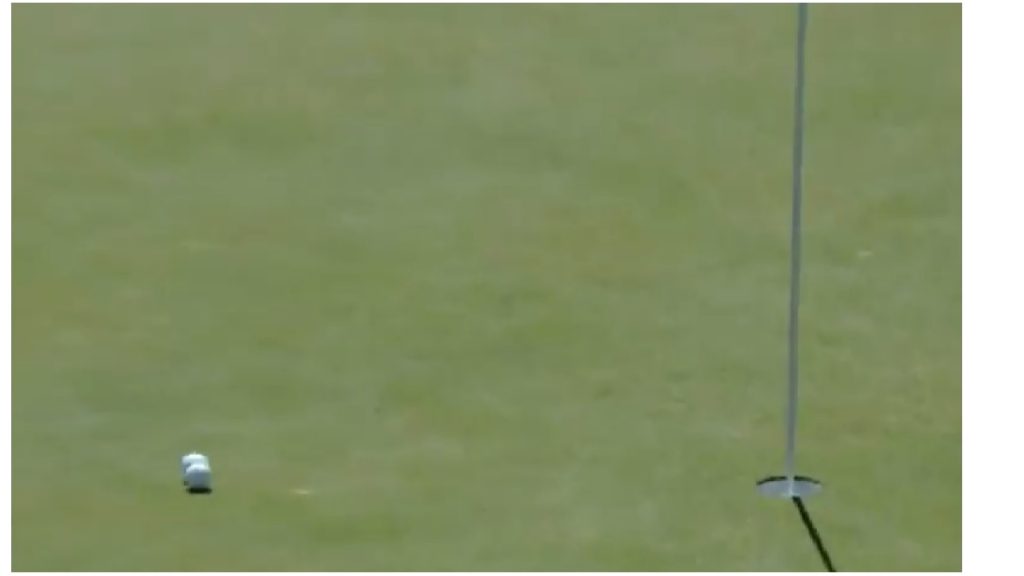Recently, a decent amount of attention has been brought up about TOUR players not correctly marking their golf ball while it is situated next to the hole after hitting a short pitch from near the putting green (from a bunker or otherwise). This ball now potentially serves as a backstop if their fellow competitor is also to play a close shot from just around the putting green.
This is averse to the spirit of the game and many people think this is part of the game and players are using the Rules of Golf to their advantage. A player may not intentionally use another player’s ball to affect their own play. The Rules are quite clear on this procedure and are in fact are very penal for players that agree to proceed this way.
Rule 22/6 states:
“Question: In stroke play, B’s ball lies just off the putting green. A’s ball lies near the hole in a position to serve as a backstop for B’s ball. B requests A not to lift his ball. Is such a request proper?
Answer: No. If A and B agree not to lift a ball that might assist B, both players are disqualified under Rule 22-1.”
If you look at the verbiage used above in the answer portion of the decision, the Rule states that if players even “agree“ to operate under this procedure, they will be disqualified. Now, looking at Rule 1-3/0.5 to further expound on this thought, an agreement does not have to physically be acted out in this scenario for a disqualification penalty to apply.
Rule 1-3/0.5 states, in part:
“Question: While walking to the 1st green, A and B agree that for a ball that is out of bounds they will drop a ball at the spot where the ball went out of bounds under penalty of one stroke, even though they know the penalty is stroke and distance”¦..
Answer: A and B are disqualified under Rule 1-3 for agreeing to waive Rule 27-1b.
Even though A and B had not yet acted on the agreement, they were in breach of Rule 1-3 as soon as the agreement was reached during the stipulated round”¦”
This is also only applicable to shorter shots that have a legitimate chance of having interference.
Rule 22-3 states:
Question: A’s ball is on the putting green. B’s ball is 100 yards from the green. B requests A to lift his ball under Rule 22-2 as it might interfere with his (B’s) play. This happens several times during the round. Is such procedure permissible?
Answer: Rule 22 is intended to cover situations where there is a reasonable possibility that one ball might assist or interfere with another ball. If the Rule is being abused, as in this case, the Committee would be justified in penalizing B for undue delay (Rule 6-7).
On TOUR, there seems to be this unwritten Rule or code among players that you are not to mark your ball if it could potentially serve to be a backstop to your fellow competitor. If you think you are comfortable with this procedure, remember that all strokes taken on a score card are created equal. So, it may not seem like as big a big deal early in the week during a Thursday or Friday round.
To stretch that point out, think if two players are playing the 72nd hole at the U.S. Open and are tied for the lead. Player A hits a great chip shot to three feet, and player B now has a tough bunker shot with the putting green running away from him and Player A’s ball is in a great position to maybe slow down Player B’s ball as it approaches the hole. Would Player A now continue to observe this unwritten Rule or would they be sprinting up to the hole to get a marker down on his ball so Player B cannot use it as a backstop?
When a player lets his ball serve as a backstop, he is also affecting every single player in the field that has skin in the game. If this backstop allows a player to (unfairly) gain a stroke on the field because his ball has now stopped closer to the hole than what his talent stroke afforded him, every player involved below that player on the leaderboard has just been impacted.
Remember that the Rules of Golf are the code by which we play the game, whether anyone sees it or not. It is not a game in which players are not supposed to try and wiggle around a Rule. In many other sports, getting around a Rule or fooling a referee is a big part of the game. Players hold each other in football, catchers frame pitches in baseball and Lebron flops in basketball. Whether players admit to it or not, they are not playing by the code when they silently decide not to mark a ball. In this case, inaction is often just as telling as action.


